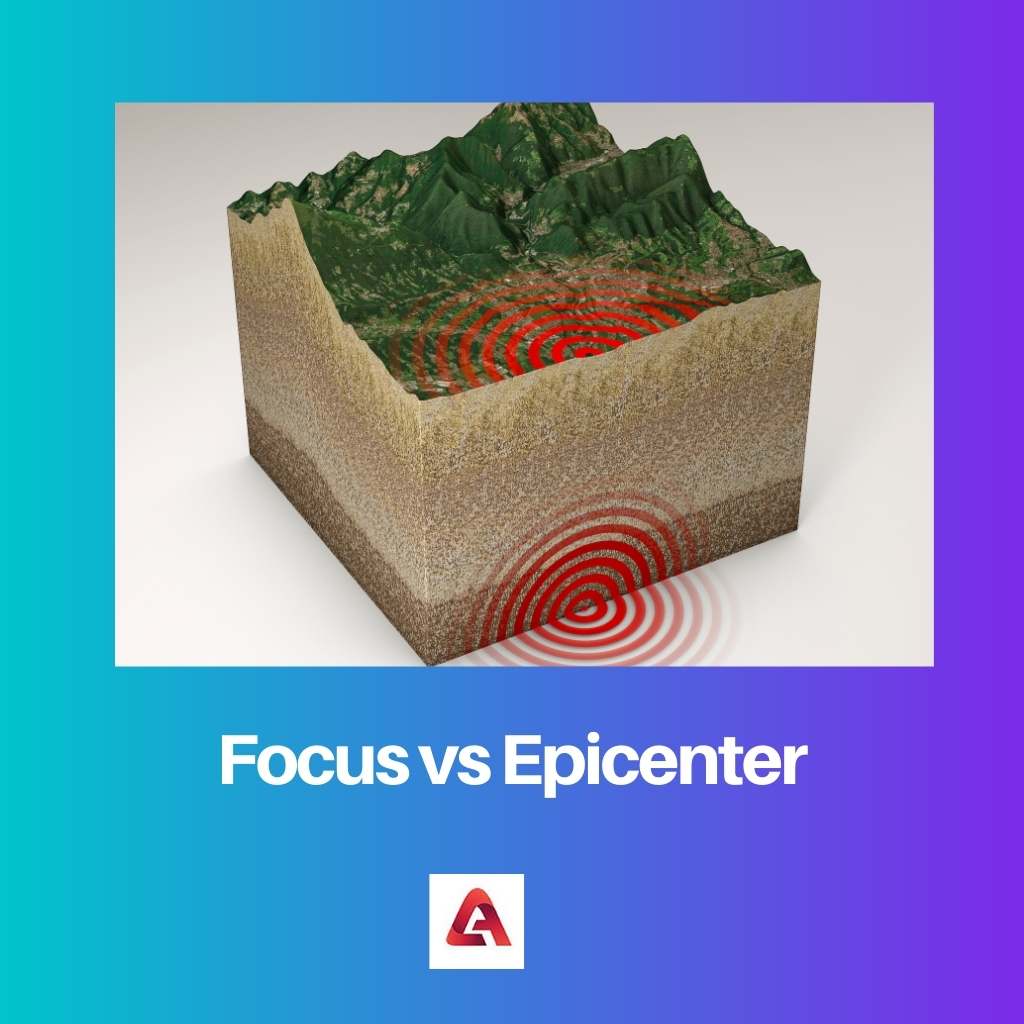There exist several natural as well as manmade calamities and disasters that may happen suddenly in our surroundings. These natural disasters include volcanic eruptions, floods, droughts, cloud bursts, earthquakes etc.
During these calamities, several natural resources and places are damaged, and to avoid that damage and to protect human life in that area, there have been made many discoveries and inventions that help to collect data on these disasters.
Various concepts are used to know and collect data regarding an earthquake that occurs in a certain location.
During an earthquake, various small activities take place that damage the land. An independent branch of science deals with the study of earthquakes.
That branch is known as seismology. In seismology, two of the main things that are studied are 1. Focus, and 2. Epicentre.
Key Takeaways
- The focus of an earthquake is the point within the Earth’s crust where the seismic rupture originates.
- The epicenter is the point on the Earth’s surface directly above the focus.
- Seismologists use the epicenter to map earthquakes and determine their intensity, while the focus helps understand the depth and cause of the seismic event.
Focus vs Epicenter
The hypocenter is the point beneath the earth’s surface where an earthquake originates, where seismic energy is released as the rocks along a fault line break and slip past each other. The epicentre is closest to the focus but not necessarily the area that experiences the most intense shaking or damage.

In seismology, the earthquake’s focus is the part of the earthquake where the waves come from. The seismic waves spread widely when they pass from the earthquake’s focus.
The earthquake’s focus is located right above the earthquake’s epicentre. The focus is also addressed as the hypocentre.
In seismology, the point of origin of the earthquake is known as the epicentre. The epicentre is right below the hypocentre of the focus.
During an earthquake, the initial ground explosion occurs in the epicentre. Since the epicentre is where the explosion begins, it is also where the damage is caused the most.
Comparison Table
| Parameters Of Comparison | Focus | Epicenter |
|---|---|---|
| Location | The subsurface of the earth. | The surface of the earth. |
| Waves | The associated wave is the body wave. | The associated waves are body waves and surface waves. |
| Position | Below the earth’s surface. | On the earth’s crust. |
| Used for | To take measurements of the three-dimensional speed waves. | To take measurements of the two-dimensional spread waves. |
| Earthquake | The earthquake rupture is initiated here. | The earthquake waves originate here. |
What is Focus?
The focus of the earthquake is also known as the hypocenter. The seismic waves that are produced during an earthquake consist of radiation. This radiation of waves begins at the focus.
The earth’s crust consists of several rocks that ruptured during an earthquake. When the radiation begins, the rupturing begins too. The rocks are then ruptured further gradually.
As these rocks experience stress from the beginning itself, the radiation causes rupture, and the stress adds more rupture to it.
The waves originate at the hypocentre and travel further to the epicentre. The epicentre is situated right above the focus, so it experiences the strongest waves during an earthquake.
As these waves travel ahead, they become less effective. The place surrounding the focus is always in motion, even though the ground that humans stand on is still.
The focus is the point where seismic waves originated, and their various forms originated in the focus.
These seismic waves are focused or collectively formed near the focus, further expanding and travelling through various parts of the earth’s crust, including the epicentre.
At that time, the waves of several types travel at different speeds and times. The motion of these waves is different too.
Several rocks are present in the earth’s crust. The earth’s crust is made up of those rocks. When the seismic waves originate and further travel towards the entire area of the crust, several cracks are developed in the rocks.
These are known as fractures. After these cracks are developed, the waves travel to the epicentre, which is right above the focus.
What is Epicenter?
An epicentre is one of the parts of the earth’s crust that lies right above the earth’s hypocentre or the earth’s focus.
As the epicentre is the closest point near the hypocentre, the waves originating from the focus first hit the epicentre and then travel further to the other parts of the earth’s crust.
As the epicentre is the closest to the hypocentre, it is part of the earth’s crust that experiences more damage than many other parts.
However, in some cases, when the subsurface is long enough, the damage is divided into all the parts, and the epicentre is equally damaged.
Now, scientists can also measure the distance of the epicentre. This distance is known as the epicentral distance. In seismology, the epicentral distance is measured in degrees and is measured majorly by using the formula of Laska’s empirical rule.
When an earthquake occurs in a certain region, the epicentral distance is measured along with other measurements to record the data.
Robert Mallet was a seismologist that tossed the term epicentre. The Epicentral distance is useful to calculate the earthquake’s magnitude in a location.
The fault rupture of the total area and the magnitude are related to each other of the earthquake.

Main Differences Between Focus and Epicenter
- The focus is situated in the earth’s crust. On the other hand, the epicentre is situated on the earth’s crust.
- The focus is also known as hypocentre. On the other hand, the epicentre does not have any other name.
- The focus is on the origin of the seismic waves. On the other hand, the seismic waves travel and pass through the epicentre after they begin from the focus.
- The epicentre is located above the focus. On the other hand, the focus is situated below the epicentre.
- The epicentre experiences comparatively more damage. On the other hand, the focus experiences comparatively less damage.





